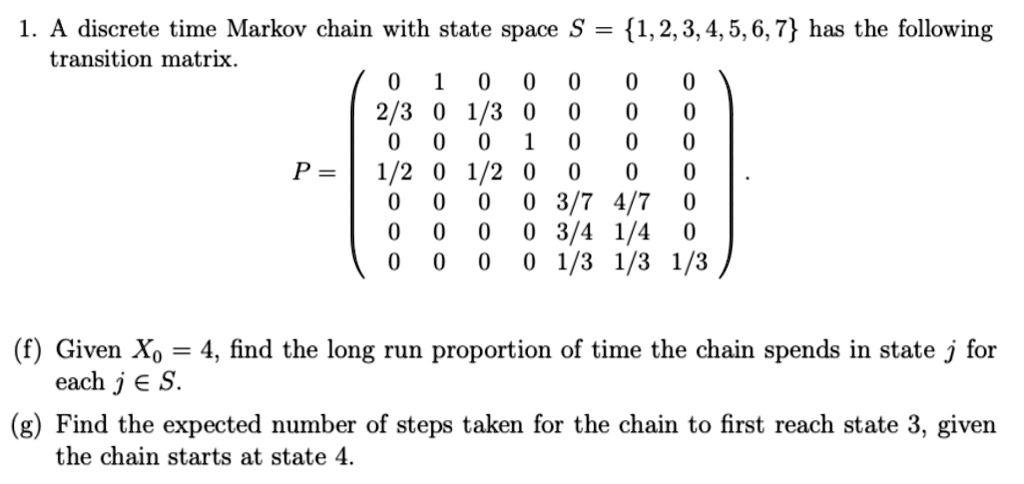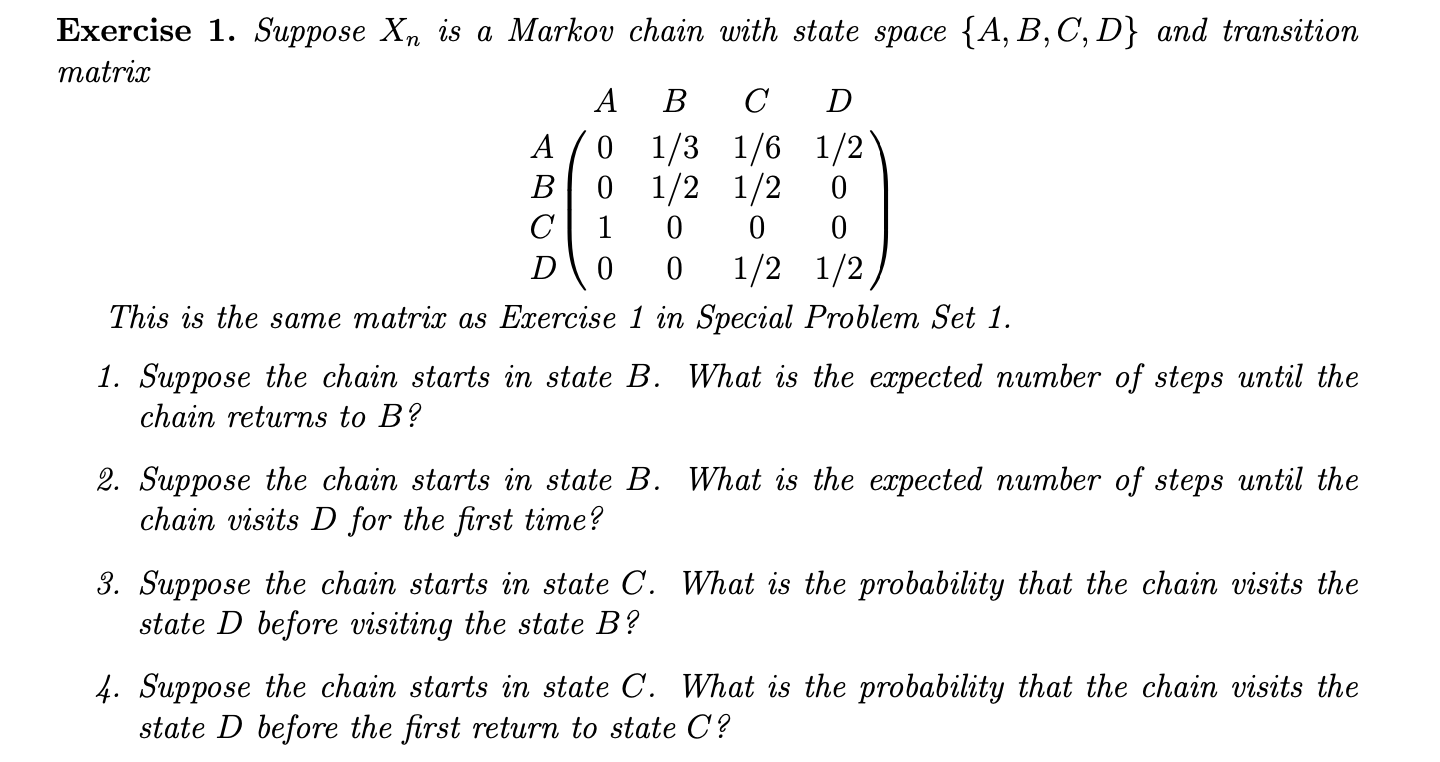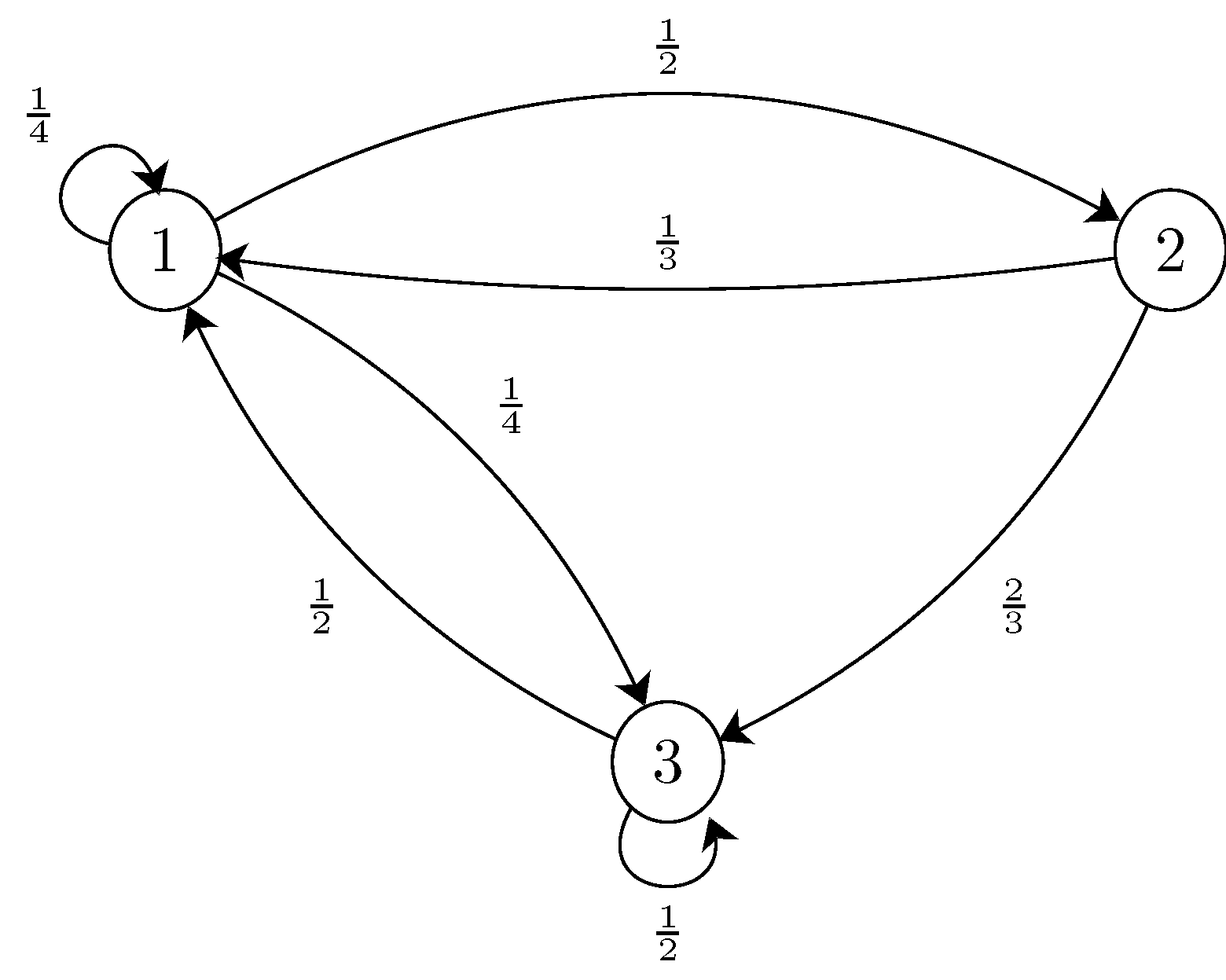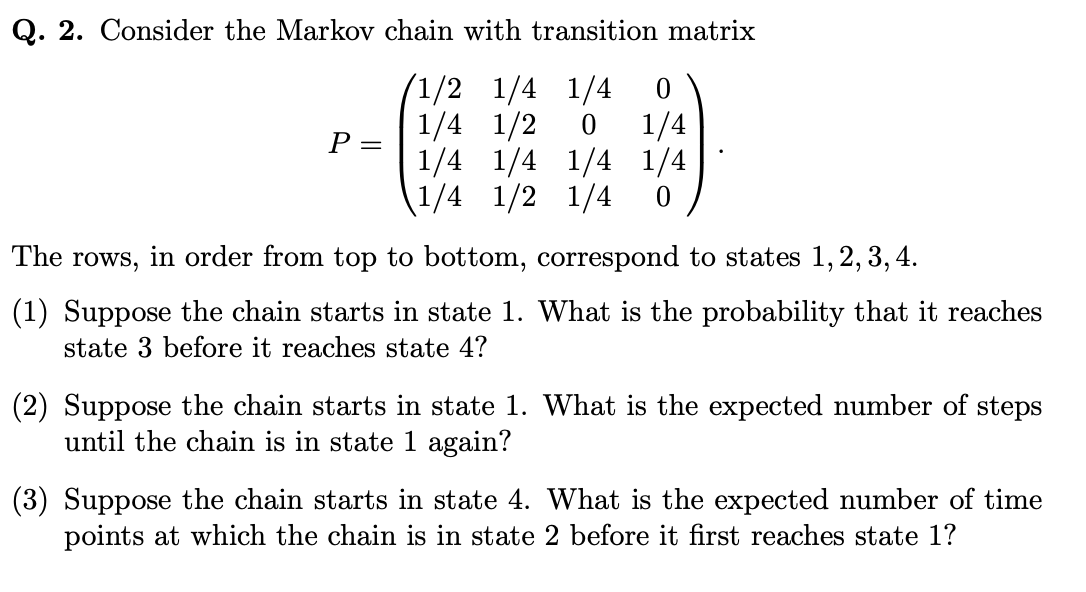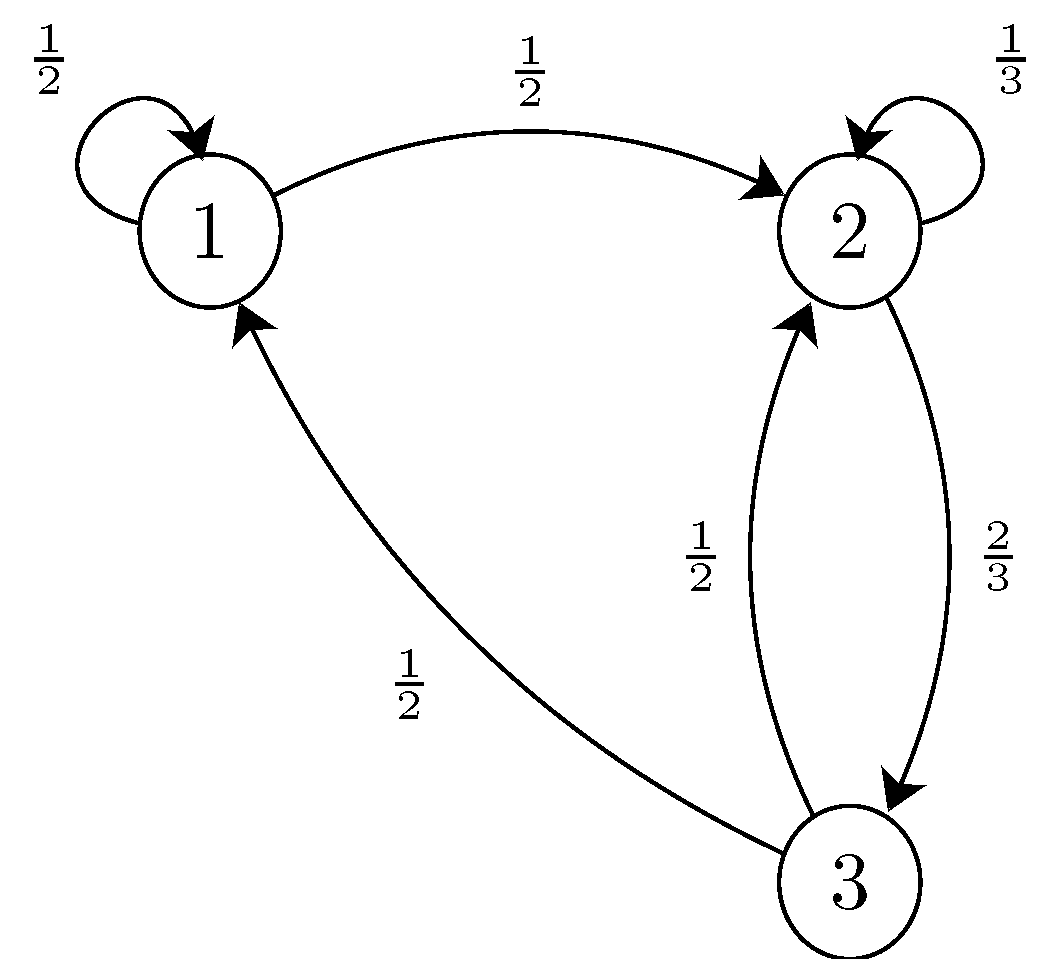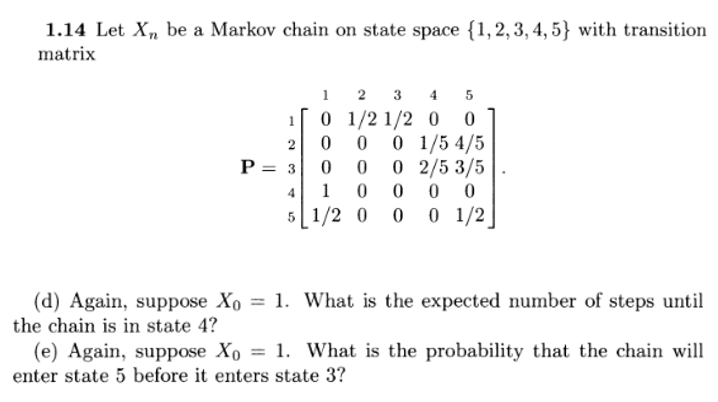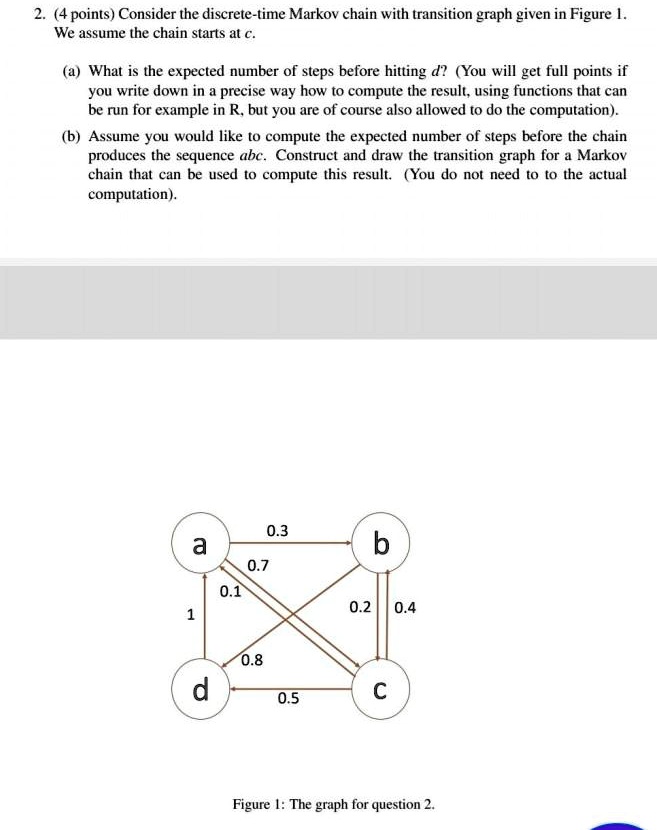
SOLVED: (4 points) Consider the discrete-time Markov chain with transition graph given in Figure |. We assume the chain starts at €. What is the expected number of steps before hitting d? (
Consider a Markov chain on n points [0,n − 1] lying in order on a circle, equally spaced out. At each step, the chain stays at

SOLVED: Consider the Markov chain specified by the following transition diagram a. Find the steady-state probabilities of all states b. If the initial state is 7, what is the expected number of
APPM 4/5560 Problem Set Five (Due Wednesday, February 20th) 1. Consider the Markov chain on S = {0,1,2} running according to the
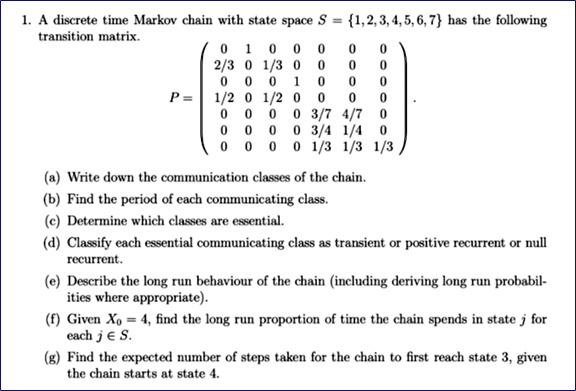
SOLVED: A discrete time Markov chain with state space transition mnatrix. 1,2,3,4,5,6,7 has the following 1/3 1/3 Write down the communication clase of the chain. Find the period of each communicating class.

SOLVED: Let Xn Matrix 2 0 Markov chain with state space 0,1,2,3 and transition 1/4 1/2 1/4 1/3 Find the irreducible classes of intercommnicating states. Ac classify them terms of positive recurrence.
